#alcman
Text
I feel like Sappho is probably going to come out on top here but I'm curious what everyone's Poetry Hot Takes are
#poetry#lyric poetry#classics#tagamemnon#alcman#sappho#alcaeus#anacreon#stesichorus#ibycus#simonides#baccylides#pindar#greek poetry#poll
127 notes
·
View notes
Text
ideal girls’ night: staying up til dawn singing in worship to the pleiades with my best friends hagesichora and agido, whose beauty rivals the speed of an ibenian race-horse
30 notes
·
View notes
Text
Ancient
This feels like AV. Pretty sure it’s RRV, but oh man, does it feel like classic AV, like the Husch and Navarro and Lazy Creek stuff of old. It does NOT feel like RRV, who seem to be in a race to plump up their pinots into 99% comfort-levels. Likewise, AV has also gotten the lush-bug of late, and these gritty, briary, rustic-feeling bitter-fests are becoming few and far between. Big, warm, savory…

View On WordPress
#Alcman#Ancient Oak#Ancient Oak Cellars#Best wine reviews#Central Coast Critic#Pinot Noir#RRV#Russian River Valley#Russian River Valley Pinot Noir#soif#Soif Wine Blog#Sonoma County#Sonoma wine#Sonoma wine country#Stephen McConnell#Stephen McConnell Wine Blog#Steve McConnell#Steve McConnell Wine Blog#wine1percent
0 notes
Photo
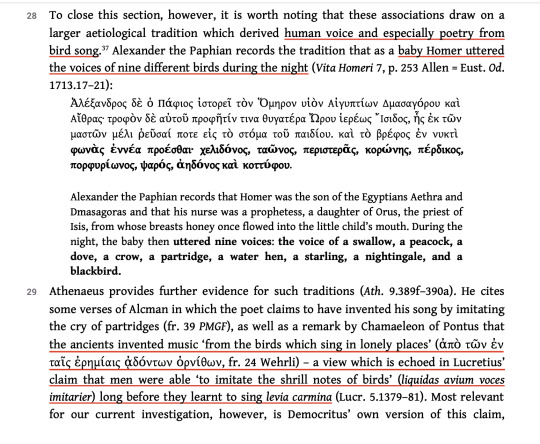



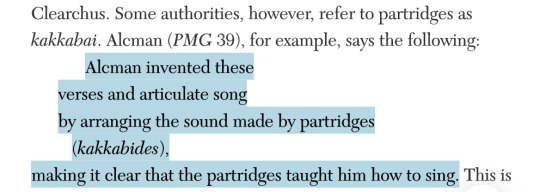
Thomas J. Nelson in ‘Most Musicall, Most Melancholy’: Avian Aesthetics of Lament in Greek and Roman Elegy.
Alcman fr. 40 (tr. David A. Campbell)
Athenaeus, IX 390a (tr. S. Douglas Olson)
0 notes
Text
"So Alkman represents the matter of all things as confused and unformed. Then he says that one came into being who set all things in order, then that Poros came into being, and that when Poros had passed by Tekmor followed. And Poros is as a beginning, Tekmor like an end. When Thetis had come into being, a beginning and end of all things came into being simultaneously, and all things have their nature resembling the matter of bronze, while Thetis has hers resembling that of a craftsman, Poros and Tekmor resembling a beginning and the end."
0 notes
Text
sometimes translation feels like a conversation across millennia and sometimes it feels like a fist-fight.
2 notes
·
View notes
Text
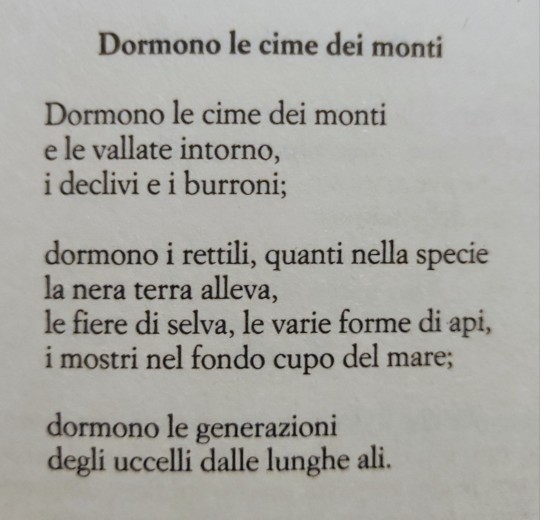
Alcmane
Dormono le cime dei monti
Traduzione di Salvatore Quasimodo
0 notes
Text
THE ILIAD: FOR DUMMIES ☀️ MASTERPOST
just kidding you're not a dummy, you're some hot stuff right there!
i will be going through the entire iliad and giving you a general overview, some interesting plot points, additional context, and some other analysis tools to better help you understand the epic!
This post will serve as a table of contents (at the end) to my Iliad posts and a general overview that I will be constantly updating! I am using the Richmond Lattimore translation of the Iliad, alongside my companion book by Malcom M. Wilcock

Before we get into analyzing the actual Iliad, we need to get into some essential questions and context about the book
WHAT IS THE ILIAD:
The Iliad was written by Homer (this is actually debated but we can get into that later) around 750 and 550 B.C.E.
At its core, the story is about heros and humans. It's an Iron Age poem about an event, the Trojan War, that was supposed to have taken place in the Bronze age. The Iliad is considered to be a poem comprised of multiple books, 24 to be exact
This story is only a few days of the tenth and final year of the Greek siege against the city of Troy- this means it relies on the audience already knowing most of the basic details about the Trojan war and the gods themselves (don't sorry, I will provide this for you as we go along)
WHO IS HOMER:
The age old question: who the fuck is Homer?
Literally nothing is known about this dude except that he wrote (or was credited with writing) the Odyssey and the Iliad
People have referenced his writings for EONS. Archilochus, Alcman, Tyrtaeus, Callinus, and even Sappho have referenced the poems of Homer in their own works. These also were popular in fine art in the late 7th century B.C.E.
There is a general consensus that Homer was from Ionia- a territory in western Anatolia or modern day Turkey that was populated by Greeks who spoke the Ionian dialect, aka the birthplace of Greek philosophy. Want more info on Ionia? Click Here!
His descendants were called the Homerids/Homeridae
There is scholarly debate on if he even wrote both the Iliad and the Odyssey, or if he only wrote one, etc etc etc. This is due to some very specific differences in the structure of the words used (like the use of short vowels, and the seemingly unimportant semivowel of the digamma being missing from the epics...yeah it's a lot)
The poems were reproduced ORALLY. This means that the poems were passed down by word of mouth, which if I were to sit and listen to this entire book via a guy singing at me...idk man I think I would leave
All of this to say, we really don't know who Homer is. There's a lot more information about what he could have looked like, if he really did write the Iliad, and a million other things, but I've already talked your ear off and we haven't even gotten into the book yet. If you want more information about Homer, check out my sources at the end of the post!
WAS THE CITY OF TROY REAL:
Yeah. There were nine layers exposed at the site of where Troy was expected to be, and nearly fifty sublayers at the mound of Hisarlik
Troy was a vassal state: meaning it had an obligation to a superior state, which happened to be the Hittite Empire
Troy had a lot more allies than original fighters in the city, meaning they had many language barriers- making the army harder to control than the unified Greek enemy.
THE STYLE OF THE ILIAD:
Cause - Effect - Solution
The poem is concluded with a mirror image of its beginning: an old man ventures to the camp of his enemy in order to ransom his child
The poem foreshadows the death of Achilles in MULTIPLE passages! He knows he is destined to die young if he fights at Troy, and the demise of his lover (don't fight me on this) Patroclus gives us an even more extended foreshadowing of the grief that is to come
When Achilles dies, Thetis (his mom) takes his body from the pyre and takes him to a place called the White Island. It's not clear whether he is immortalized BUT the reference to Achilles funeral in the Odyssey states that Achilles is cremated and his bones are placed in a golden urn along those of Patroclus, and the urn is entombed under a prominent mound (tsoa fans...you're welcome)
This isn't really necessary knowledge but moreso something I think is cool: the backstory from the Iliad of an abducted bride also appears in the Sanskirt epic Ramayana (circa 4th century B.C.E.)
okay now here is the ACTUAL important stuff
Humanity is the center of the universe in the Iliad. Humans motivations and concerns generate action in the poem, while the gods are often reduced to the role of enablers or spectators
The style of the poem collaborates with the vision that the speciousness of this epic means that every thought and gesture, spear cast and threat, intimate conversation and lament CAN be recorded. It gives a consciousness behind the demands of the iliad that these interactions MUST be recorded, this attention to detail is another way of showing centrality and the worth of the human experience (Greek OR Trojan)
The Iliad is ultimately a poem about death, the chief elements that distinguish the mortals from gods are: Death shadows every action, and death is neither abhorred nor celebrated. Instead it crystalizes by means of this one theme, death in battle, the essence of what it means to be human (Life is a struggle each person will always lose, the question is how one acts with that knowledge)
Modern readers and analysis blogs will state that one's inner spirit is somehow the "real" self, however the Iliad assumes the opposite: The psykhai (soul, spirits) of dying heroes fly off to Hades while their autous ("selves") are left behind in the form of dead bodies
Glory is INCREDIBLY important in the iliad, why? If mortals could live forever (like gods) then glory would be useless. It's a commodity to be exchanged, and because of this it has an economic and symbolic reality
Companionship is incredibly important
Pity is also very important, it's the concluding note of the poem. Even the gods feel pity
THE GODS AND THE ILIAD:
The Iliad gains depth by the divine dimension shedding glory on the humans at Troy. The gods are so intensely concerned with warriors and their fates which elevates the mortals to a special plane
Mortals are only separated from gods because they grow old and die
The symbiotic bond of gods and mortals is always see-sawing between adoration and antagonism
Humans who get too close to the gods risk being struck down, case in point, Achilles. He's young, well-made, he's a warrior but also a singer/musician (the only hero to be seen doing such a thing), he looks and acts like Apollo. THEREFORE...it's no coincidence that Apollo is ultimately the god who slays Achilles, just as he did Patroclus
Poetry supplemented or even guided ancient Greek religious interpretation much more than the activity of priests due to the lack of any official religious text. This gave ancient Hellenism a very fluid nature
This was a long post, and it's only the first of many! I will continuously update this with more sources about the Iliad and answer any FAQs that come up! I love classic literature, and as a STEM student I need to entertain my passion somehow lol. There is a table of contents at the top of the post, as well as right here. This will be updated for each book of the Iliad I write about, as well as any supplemental posts I make about certain topics and themes as I go along. I am putting a LOT of work into this series of posts, so let me know your thoughts or anything you'd like me to change/add/etc! Happy reading!
TABLE OF CONTENTS:
(This is empty because this is the only post...more posts coming soon)
Sources/Citations/Additional Material
Homer- Britannica
Homerids- Britannica
Who Is Homer- The British Museum (fuck the British Museum)
Ionia Information- World Encyclopedia
The Hittites- Britannica
Ramayana Overview- British Library
Overview of Greek Mythology- Theoi
The Iliad- Overview via Britannica
Thetis- World Encyclopedia
#greek mythology#hellenic pagan#hellenism#pagan#helpol#deity worship#the iliad#homer#greek myths#greek#literature#the iliad analysis#iliad#iliad readthrough#iliad analysis#greek myth#academic content#masterpost#iliad masterpost#greek mythology masterpost#witchblr#hellenic#citations#homer's iliad#trojan war#the song of achilles#bookblr#analysis#book analysis#poems
103 notes
·
View notes
Text

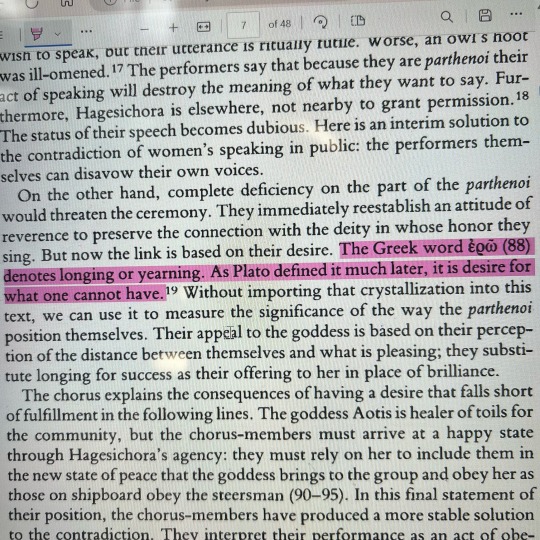
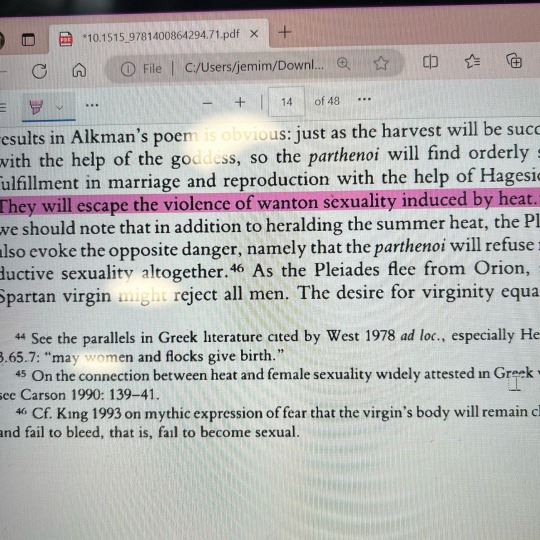
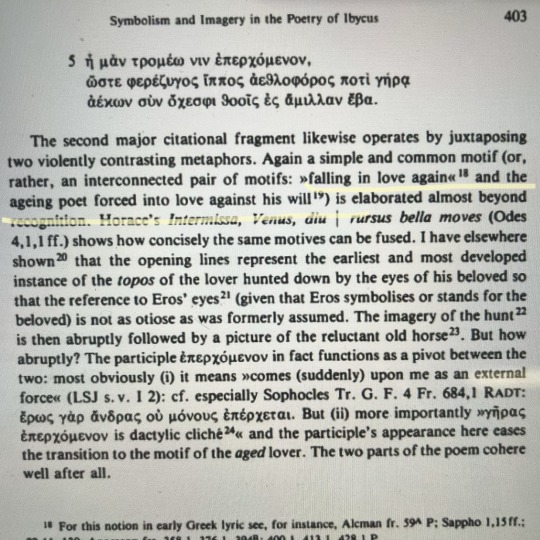
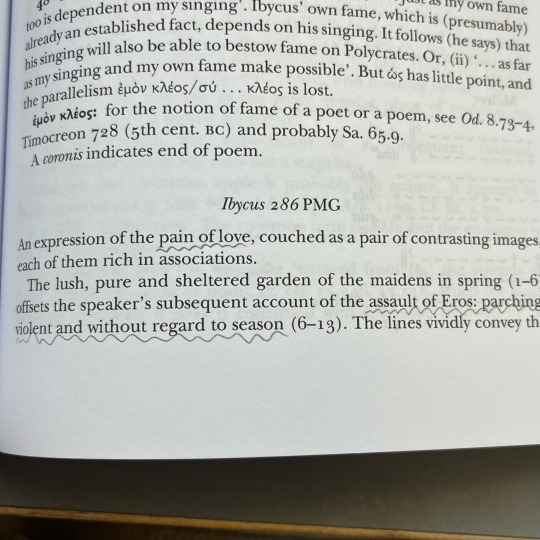
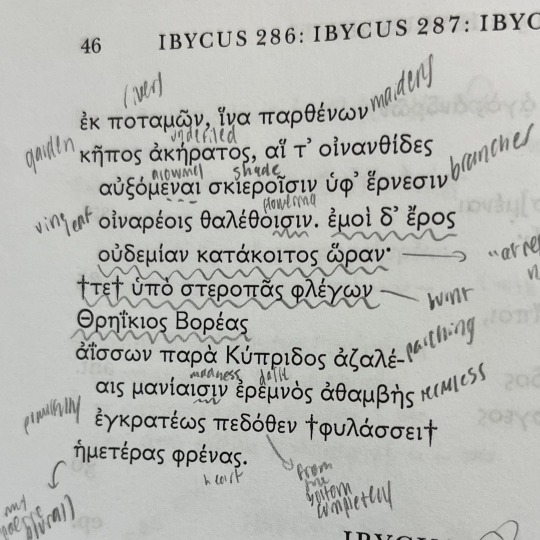

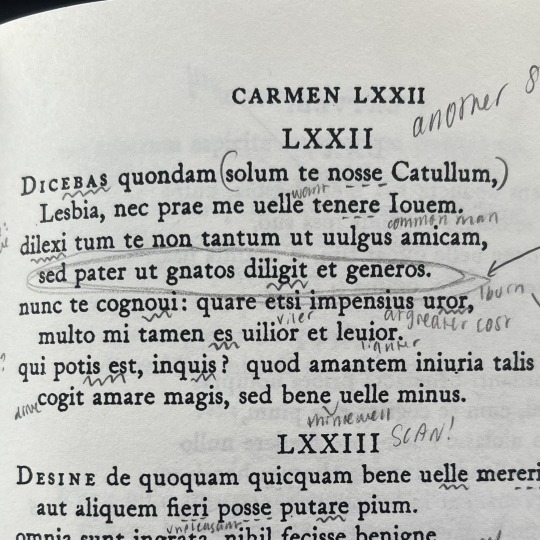
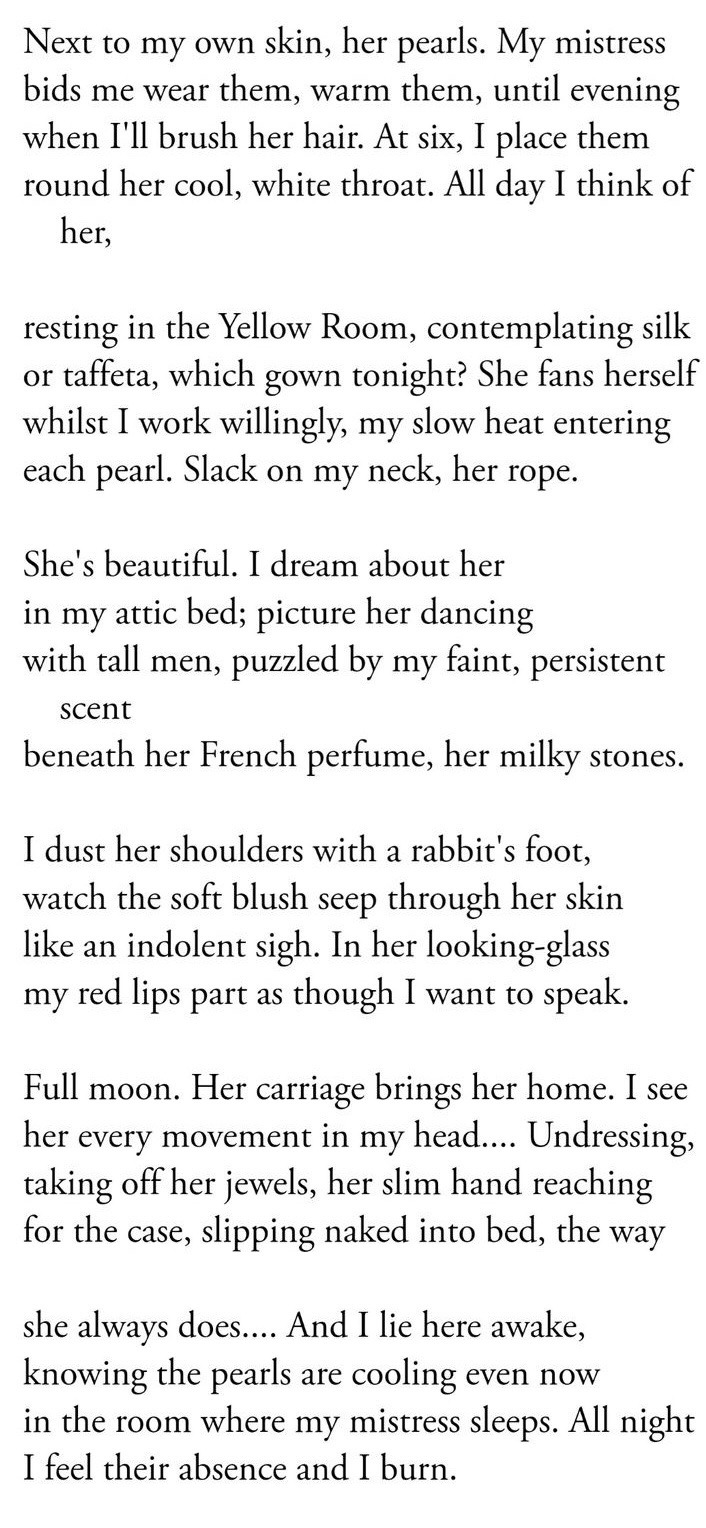

alexa play baby i’m burning by dolly parton
catullus 83 / on alcman / catullus 85 / catullus 72 / on hesiod / on carmina populara / budelmann / ibycus / carol ann duffy / zenodotus
#or disco inferno#this has been floating around in my brain for so long#love as burning#catullus#classics#lyric#sappho#greek#latin#🪞
19 notes
·
View notes
Note
hello! I read you're "predominantly a Romanist" so I'm not really sure if you can help me but I have this question bugging me for weeks and I thought some clarity from people more expert than me could probably be insightful, so here's the tea: many generations of Italian high schoolers have been taught that Sappho was the headmaster of some sort of college (the term used in lit history books is "thiasus", but I'm 99% sure this is some wild anachronism, and that if such institution even existed it was certainly not called that); according to Ye Olde Books, this thiasus was some sort of bon ton academy to prep young girls for womanhood and marriage, and Sappho's homoerotic poetry must be therefore viewed through this "socratic" lens. Herein lies the issue, that while there seems to be no ancient evidence to prove or disprove this fact, every Italian schoolbook I've stumbled upon either in high school or university never provided a source for this (they all mention the Souda which is problematic in itself, but even there it's only said that her pupils were so and so and so, not that she was actually the head of any formal institution). Plus, looking over on wikipedia, the Italian one takes the thiasus claim at face value without even giving a source (again), while the English wikipedia goes at a length to explain that this idea has no historical grounds and it's just a xix century suggestion. I've even stumbled upon this Maximus Tyrius rhetorician from the second century and he quotes Sappho's views on love and the women she loved, without explicitly saying they were her pupils or part of an academic circle.
So, here's my question: is this concept actually still taught in the Anglo world, and is there any substantial evidence for it? Is it just a weird little straightwashing lie that is still taught in my home country to try and justify any homoerotic reading of the Lesbian, or is there possibly any truth in it?
Sorry for the long ask but I'm going kinda insane here, and i thought one thing i could do is hear from some non Italians cause it's clear to me that all Italian texts are more or less a copypaste of each other on this subject; if you could please tell me anything about this I'd be so thankful, thanks a lot xoxo
Hello! It's been a minute since I've been seriously engaged with Sappho scholarship, but this is something I am familiar with.
The short answer is, no, as far as I know there is no real ancient evidence for it and the concept has generally been regarded as debunked in English-language scholarship since the 90s. The oldest source we have for the concept is the 10th c. CE Souda, which (as you mention) is deeply problematic for a variety of reasons, and it seems probable that the idea of Sappho's thiasos originates with one of the many Greek comedies about Sappho (Sappho was something of a stock character in Greek comedy, with the joke typically being her excessive (hetero-)sexuality rather than homosexuality). The idea seems to have been picked up by 19th century German scholars, and the argument for it relies on the testimony in the Souda along with apparent parallels between Sappho's expression of homoerotic desire and the homoerotic language between women and girls in Alcman's parthenaia, which do have a context of chorus trainer/trainee relationships. However, there is probably no good reason to assume that Alcman/Sappho parallels make for a strong argument considering that the texts come from entirely different city-states and social contexts. I do know that Renate Schlesier has argued for a much less heteronormative and IMO more plausible version of the thiasos idea, which is essentially that the circle of women mentioned in Sappho's poetry is not any kind of "academy to prepare (aristocratic) young women for marriage" but a circle of enslaved sex workers/courtesans (hetairai). Schlesier cites the fact that the female personal names mentioned in Sappho's poetry are all names that would typically be associated with enslaved women and hetairai, at least prior to the Hellenistic period, and considering that the symposium was probably the main venue for the performance of erotic lyric in antiquity this seems to make a good deal of sense.
I won't recommend the article that essentially debunked the thiasos idea on account of its author being a truly awful person for unrelated reasons, but I would recommend this excellent Eidolon piece on "Re-Queering Sappho" as well as Melissa Mueller's 2021 chapter "Sappho and Sexuality" in The Cambridge Companion to Sappho (link here, but probably requires a library subscription) which covers the history of the idea very well and presents a compelling reworking of the idea of Sappho's circle in a way that embraces rather than resists the queerness of Sappho's poetry.
8 notes
·
View notes
Text
I gotta explain some personal darmok that's appeared on this blog before, the "great unbreakable cheese."
Alcman. Spartan poet, 7th century BCE
Fragment 56:
Often times upon the peaks of the mountains,
when
the many-torches festival is pleasing to the
gods
she, carrying a golden milk-bucket, a great
drinking-cup
such as the shepherd-men have,
setting her hands to the milk of a lioness
brews a great unbreakable cheese for the
Argos-slayer [Hermes].
— my translation in 1998, back when I could actually read ancient Greek 😭 before I left academia and my brain molded
(i'm sure it was just a poetic way to say, "hard cheese," but the literal meaning struck me as funny)
#great unbreakable cheese#classicss#ancient greek#ancient greek literature#ancient greece#this is sparta
6 notes
·
View notes
Text
“Epic makes of Poseidon a great lord of the sea, emerging from his palace under the waves near Aegae to aid the Achaeans in battle, or rousing a storm to drown Odysseus on his raft. But Poseidon himself is a complex Mycenaean deity whose origins lie further inland; he is the Earth-Shaker, an ancestral god with ties to freshwater springs and horses. Even in the Iliad (13.10–30), the dominant image is that of Poseidon as a charioteer, driving his golden-maned horses over the sea. He himself is not a personification of the sea, but its ruler. If Poseidon is a lord of elemental forces, his Nereid consort Amphitrite is more closely identified in the Odyssey with the element itself: she breeds many monsters (Odyssey 5.417–22, 12.90) and the waves are hers (Odyssey 3.85, 12.55). Amphitrite is more than a literary invention; she often appears in cultic contexts with Poseidon, as at Isthmia (Pausanias 2.1.7). An archaic votive dump at Penteskouphia near Corinth yielded clay pinakes depicting Amphitrite with smaller-sized worshipers, or riding in a chariot with Poseidon.
In Greek mythology, the gods who represent the sea share its unbounded nature as the source of creatures formless and strange to human eyes. Monsters and shape-shifters, the latter often possessed of prophetic powers, come from the sea. Nereus and his congeners Proteus and Glaucus are Masters of Animals who control the supply of fish and other marine animals. In Greek fishermen’s folklore, these Old Men of the Sea were elusive shape-changers who could tell one’s fortune if captured. In Greek religious practice, on the other hand, the overriding concern with regard to the sea was safe travel. Many gods could be called upon to protect mariners, especially those resident in harbor towns (often Aphrodite or Poseidon). The Dioscuri, who appeared in ships’ rigging during storms in the form of St Elmo’s fire, were popularly viewed as saviors who warded off disaster at sea (Alcaeus fr. 34 Campbell).
Homer was also instrumental in shaping the image of the sea nymphs called Nereids, who were closely associated with the story of Achilles. Thetis, the Nereid mother of the hero, seems to have played an important role in early Greek cosmology; the Iliad alludes to her rescue and/or sheltering of Zeus, Dionysus, and Hephaestus in their times of need, while she figures in a fragment of Alcman as ‘‘the origin of all,’’ a primal creative force (Calame 1983 fr. 81). Thetis was destined to bear a son more powerful than his father and thus posed a threat to any god, including Zeus, who pursued her. Like Ge, she was imagined as a powerful primordial figure, who first threatened, then helped to bring about, the cosmic order, allowing herself to be subordinated in the process. Slatkin (1991:79) relates Thetis’ humble status in Homeric epic to the fact that her cult, unlike those of the Olympian gods, remained geographically limited. One of the few cults of Thetis belonged to Cape Sepias in Thessaly, where the Persians, having suffered heavy damage in a storm, sacrificed to her and the Nereids as local deities (Herodotus 7.191). A venerable Spartan cult of Thetis (Pausanias 3.14.4) may have inspired Alcman’s cosmological verses. Altars and thank offerings to the Nereids as a group, on the other hand, are relatively common. Like other marine deities, they could prevent disasters at sea. An early example is Sappho’s prayer to Cypris (Aphrodite) and the Nereids (fr. 5 Campbell) for the safe sea journey of her brother Charaxus. Ino/Leucothea, who was transformed into a Nereid after leaping from a cliff into the sea, saved Odysseus from drowning by giving him her magical veil (Odyssey 5.33–8). With her son Palaemon, also a sea-god and guardian of ships, Ino was honored at Poseidon’s sanctuary of Isthmia and elsewhere. Leucothea and Palaemon possessed a dual identity as drowned mortals (hence the chthonic and funerary elements in their cults) and as reborn gods who offered salvation to sailors in peril and the hope of an afterlife to those who drowned. Far more than the terrestrial nymphs, the Nereids were associated with death and rebirth. In epic, they play an important role as mourners of Patroclus and Achilles (Iliad 18.282–313; Odyssey 24.45–89), while post-Homeric literature and art focused on their ability to confer a blessed afterlife on the deceased, just as Thetis brought Achilles to the White Island in the Euxine where he was immortalized.”
- Jennifer Larson, A Land Full of Gods: Nature Deities in Greek Religion, in A Companion to Greek Religion
88 notes
·
View notes
Text
LORD EREBUS
Greek primordial god of darkness
SOURCES
☆☆☆☆☆☆☆☆☆☆
[Theoi.com|https://www.theoi.com/]
☆☆☆☆☆☆☆
The darkness envelops the principal parts of our world. Gifting of our fears within he is the psyche's own shadows, which we relay our pleas of harmony

|Who is Lord Erebus?|

Lord Erebus(or Erebos)is the primordial darkness that was one of the first five beings that came to existence . He was born of Chaos. The meaning of Erebus is, of course, "Darkness" or "place of darkness between Earth and Hades." He is the consort(and brother!) of Lady Nyx.

|Mythology|

Erebus is also said to mean a place in the Underworld on the way to Hades . According to Cicero's "De Natura Deorum," Lord Erebus had many children too many to list with the Fates and Oneiroi being major examples of his offspring. According to Alcman, Lord Erebus was the fourth being to come into existence. In Aristophanes comedy "Birds," Chaos, Lord Erebus , Lady Nyx, and Tartarus were the first beings before the existence of Earth, Air and Heaven.

3 notes
·
View notes
Quote
The poet Alcaeus, writing about the same time as Alcman and Aristeas of Proconnesus, mentioned a story in his Hymn to Apollo in which the newborn Apollo received a chariot drawn by swans from his father Zeus. Swans are an important feature of the Hyperborean myth. They often act as a link between the Hyperboreans and Apollo. Their migrations unite north and south, and also symbolize the connection between the real world of the Greeks in the south, on the one hand, and the mythical world of the Hyperboreans on the other.
Timothy Bridgman, Hyperboreans: Myth and History in Celtic-Hellenic Contacts
#timothy bridgman#hyperboreans#apollon#swans#ancient greece#animal lore#hyperborea#quotes#hellenic deities#other worlds
3 notes
·
View notes
Text
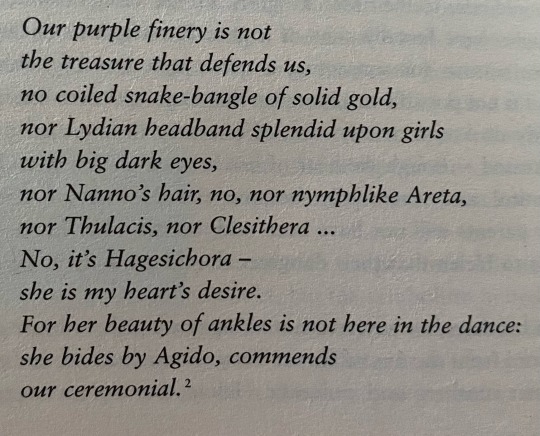
Part of a Lakedaimonian partheneion, maiden-song, from the 6th century BCE (the longest fragment of such that we have.)
A partheneion was a competitive chorus for girls, invented at Sparta by Alcman, who wrote the above.
Hagesichora is the chorus-leader; and Agido, Cartledge suggests, was a (female) member of the Agiad royal house.
(Taken from Cartledge, The Spartans: An Epic History.)
#AStorySetinSparta#ancient sparta#ancient Lakonia#ancient Lakedaimon#Ancient Greece#Sparta#Spartan history#Greek history#Greek poetry#greek chorus#choral dance#ancient women#Spartan women
6 notes
·
View notes
Text
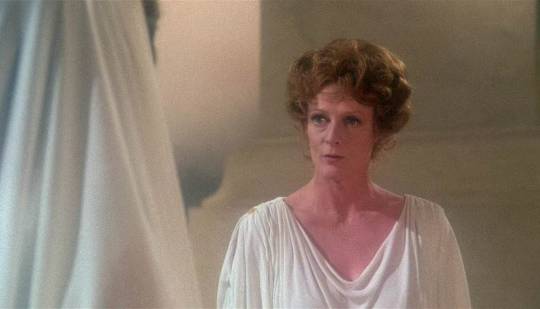
Maggie Smith as Thetis in Clash of the Titans (1981)
Known to us only through a tantalizing commentary, Alcman's poem envisaged a sequence of creation in which at first only undifferentiated matter existed; then Thetis, the genesis panton, appeared and generated Poros, "the way," and Tekmor, "the sign." Darkness existed as a third feature, later followed by day, moon, and stars. With Thetis the creatrix as demiurge, this cosmogonic process involved not so much the bringing into being of matter as the discrimination of objects, the ordering of space, the illumination of darkness with light: an intellectual rather than a physical creation. In the commentator's reading, Alcman presented Thetis as the primal, divine creative force—the generative principle of the universe. This aspect of Alcman's poem has been discussed by M. Detienne and J.-P. Vernant, who argue for a close connection between Thetis and Metis. In various versions of their mythology, Thetis and Metis have associations with bonds and binding; both are sea powers; both shape-shifters; both loved by Zeus; both destined to bear a son greater than his father. It is the power of metamorphosis as an attribute that disposes these goddesses of the sea to a crucial cosmological role: they "contain" the potential shapes of everything created and creatable.
1 note
·
View note